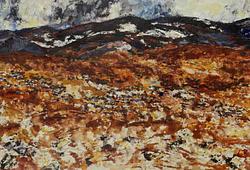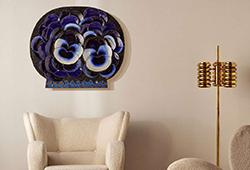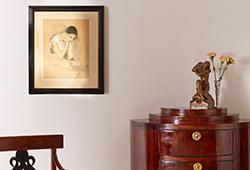Carl Fredrik Hill
Seascape
Probably executed around 1873. Oil on relined canvas 21 x 34 cm.
Provenance
Originally in the collections of Mrs. Marie Louise Klason (the artist's sister, née Hill), Lund/Stockholm; by descent; Bukowski Auktioner AB, Stockholm, Sale 556, "Vårens Klassiska", June 1-4 2010, lot 136; Rolf Schmitz Collection.
Literature
Adolf Anderberg, "Carl Hill -Hans liv och hans konst", 1951, compare "Marin", illustrated full page, Pl. 21 and listed in the catalogue p. 304 (under the section/chapter "SVENSKA MOTIV. 60-talets slut t. o. m. sommaren 1873"); Karin Sidén, 'De tidiga verken', in exhibition catalogue, Nationalmuseum, Stockholm, "Carl Fredrik Hill", October 1 1999 - January 16 2000, compare no. 8, "Marin" illustrated in colour p. 92.
Artist
Carl Fredrik Hill was a Swedish artist born in Lund. Hill is considered one of Sweden's formost landscape painters. His fate and artistry are perhaps the strangest but most interesting in Swedish art history. Born in an academic home in Lund, despite his father's protests, he managed to begin studies at the Art Academy in Stockholm and then traveled to France, where he came in contact with Corot's landscape painting. He found his inspiration in Barbizon and later on the River Oise, in Luc-sur-Mer and Bois-le-Roi. He painted frantically with the hope of being accepted into the Salon de Paris. Already during his student years, he struggled with an incipient mental illness and at the age of 28 he was taken to the mental hospital in Passy. During the hospital stay he began his rich production of drawings and then continued with the production after his return to Lund, where he was cared for by his family for the rest of his life. In thousands drawings, a fantasy world of figures scenes appears. Today, Hill's river landscape and flowering fruit trees from the years in France, together with the visionary drawings from the period of illness in Lund, have received great recognition. His art depicts a loneliness and longing that is easy to get caught up in. He is mainly represented at the Malmö Museum and at the National Museum in Stockholm.
Read more


































